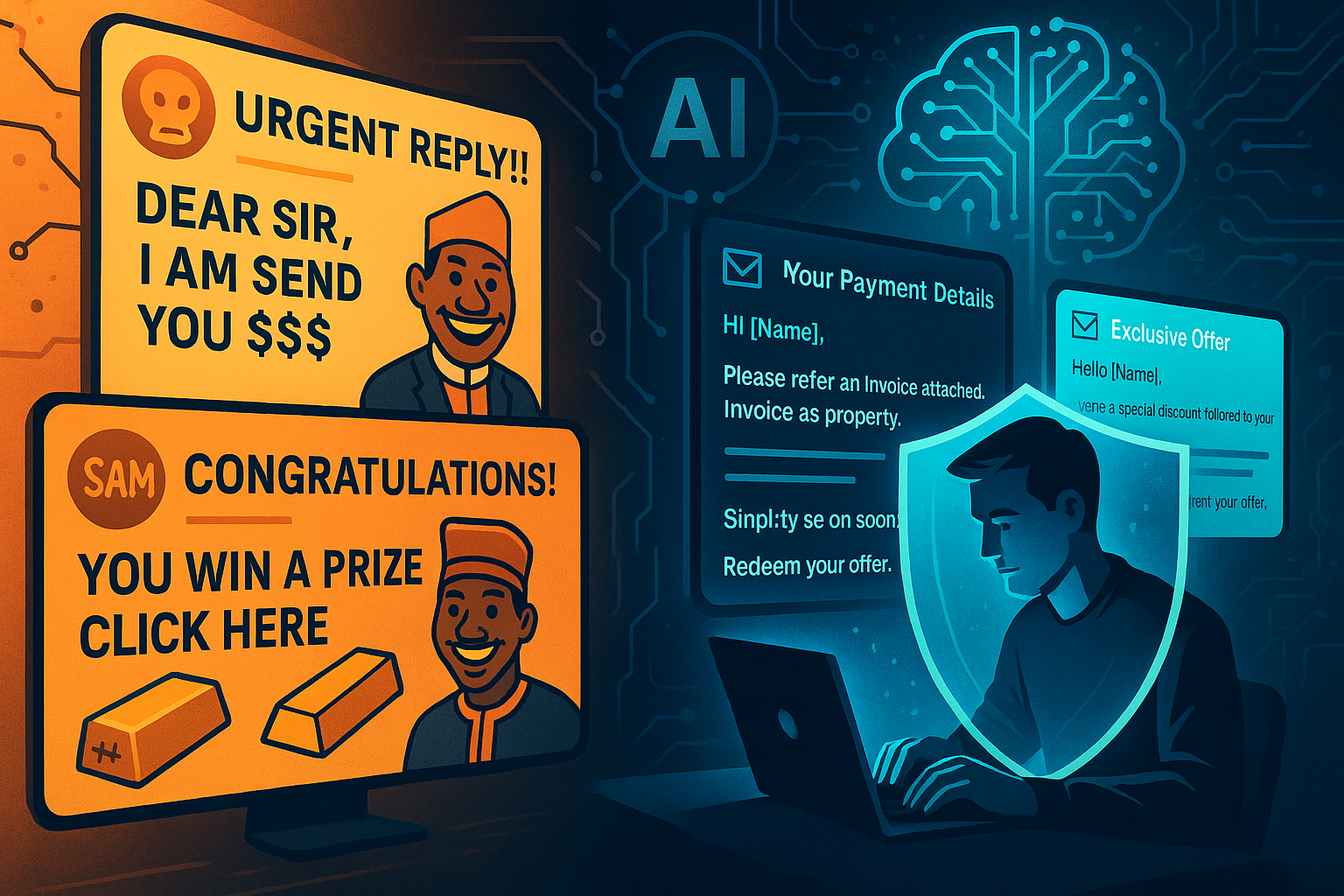Remember the days of ridiculously bad spam emails? The ones with glaring misspellings, bizarre grammar, and promises of millions from Nigerian princes? Those days are rapidly fading into the past, thanks to Artificial Intelligence.
AI has launched spam into a new era of sophistication, making it harder than ever for both our email filters and our human eyes to spot the fakes. But it's not all bad news! AI is also a powerful weapon in the fight against these digital nuisances.
Let's dive into how AI has transformed the spam landscape and, more importantly, what you can do to protect your inbox and your personal information.
🤖 The Rise of the Intelligent Spammer: How AI Changed the Game
AI isn't just making spam look better; it's fundamentally changing how it's created and distributed.
1. Flawless Language and Grammar: Gone are the days of obvious errors. AI language models can generate grammatically perfect, natural-sounding text, making phishing emails virtually indistinguishable from legitimate communications.
2. Hyper-Personalization at Scale: Scammers now use AI to comb through vast amounts of public data – from your social media profiles to news articles you've engaged with. This allows them to craft messages that are uncannily personalized, referencing your hobbies, recent purchases, or even mimicking the writing style of someone you know.
3. Automated, High-Volume Attacks: Imagine generating thousands of unique, contextually relevant phishing emails in seconds. AI makes this possible, enabling spammers to launch massive, automated campaigns that are difficult to block with traditional methods.
4. The Deepfake Deception: Perhaps the most unsettling development is the use of AI to create deepfake audio and video. This means a scammer could potentially impersonate your CEO in a video call, a family member in a voice message, or a colleague asking for an urgent transfer, adding a terrifying layer of realism to their schemes.
🧐 Your Shield Against Smart Spam: Tips to Spot the Fakes
While AI is making spam smarter, you don't have to be a victim. By being vigilant and knowing what to look for, you can significantly reduce your risk.
http://googleusercontent.com/image_generation_content/1
1. Scrutinize the Sender's Details: Don't just glance at the display name. Always hover over (or tap and hold on mobile) the sender's email address to reveal the actual address. Look for subtle misspellings, extra characters, or domains that don't match the supposed sender (e.g., @microsoftsupport.xyz instead of @microsoft.com).
2. Beware of Urgency and Emotion: Scammers still rely on basic human psychology. Be highly suspicious of any message that: * Demands immediate action ("Act now or your account will be closed!"). * Threatens negative consequences. * Promises "too good to be true" offers (e.g., lottery winnings you never entered). * Tries to evoke fear, excitement, or sympathy. * Take a breath. If it feels like an emotional manipulation, it probably is.
3. Verify Unexpected Requests – Independently: If you receive an unexpected request for sensitive information, a money transfer, or a click on a link – especially if it's from a seemingly known contact – do not use the contact details provided in the suspicious message. Instead, reach out to the person or organization through a verified, known channel (e.g., a phone number you have on file, their official website, or a separate email chain you initiated).
4. Hover Before You Click (Every Time!): This is a golden rule. Before clicking any link, hover your mouse over it (on a desktop) or long-press it (on a mobile device). This will show you the actual destination URL. If the displayed text says www.yourbank.com but the hover text shows malicious-site.xyz, do NOT click.
5. Trust Your Gut and Question the Unfamiliar: Even if a message looks perfect, if something feels "off," trust that instinct. It could be an unusual tone of voice, a strange request you weren't expecting, or a detail that doesn't quite add up. While AI is advanced, it can still sometimes miss the nuanced familiarity of human interaction.
The Bottom Line
The battle against spam is an ongoing "AI arms race," with both attackers and defenders leveraging intelligent technologies. By understanding how AI empowers spammers and by practicing vigilant digital habits, you can significantly enhance your personal cybersecurity and keep your inbox a safer place. Stay informed, stay skeptical, and stay safe online!

